Social Spots
Sources: Hitz, Benjamin D. A history of Base Hospital 32, including Unit R. Indianapolis, 1922.
Kaletzki, Charles Hirsch. Official history USA Base Hospital No. 31 of Youngstown, Ohio: And Unit G of Syracuse University. Syracuse, NY, Craftsman Press, 1919.
The YMCA Hut
The Y.M.C.A. and the American Red Cross-two organizations that were destined to play an important part in the comfort and welfare of the hospital and its patients-made their advent in Contrexeville. The Y.M.C.A. “hut,” which was located in the “Salle Chaude” in the center of the Colonnade, opened on February 8th with a house-warming party and a band concert. Besides the canteen, which offered a variety of cigarettes, candy and odds and ends, the hut was equipped with writing tables, pool and billiard tables and a piano. The Y.M.C.A. activities in Contrexeville were in charge of Mr. Percy McFeely. Additional attractions and entertainments were added from time to time, and the "Y hut" became a popular loafing place during leisure hours.
[Hitz, p. 56]
Oct. 14: The American Red Cross opened its hut, which had been in course of construction for several weeks. Because of the presence of respiratory diseases in the center it was impossible to celebrate the occasion in the manner desired, there being only a simple housewarming sufficient to introduce to the patients and personnel of the two hospitals what was considered the finest Red Cross hut in France. The building was 160 feet in length and 60 feet in width, of hollow tile construction. At one end was a sales canteen, behind which were the storeroom, kitchen and office of the directress. At the other end was the stage with two class rooms and dressing room back of it. The main hall was 100 feet long and the full width of the building. The stage, considered one of the best appointed in the entire A.E.F., was designed by Pvt. 1c Stanley Day, of this command. A series of oil paintings, some of them showing Contrexeville scenes, adorned the walls. They were the work of Pvt. Conway of Base Hospital No. 32. Because it was planned to stage all theatrical performances and entertainments at the hut, the Casino theater was abandoned. The opening of the sales canteen replaced the facilities for such service which had been maintained by the Y.M.C.A., under the capable direction of Mr. Percy McFeely.
[Kaletzki, p. 68]
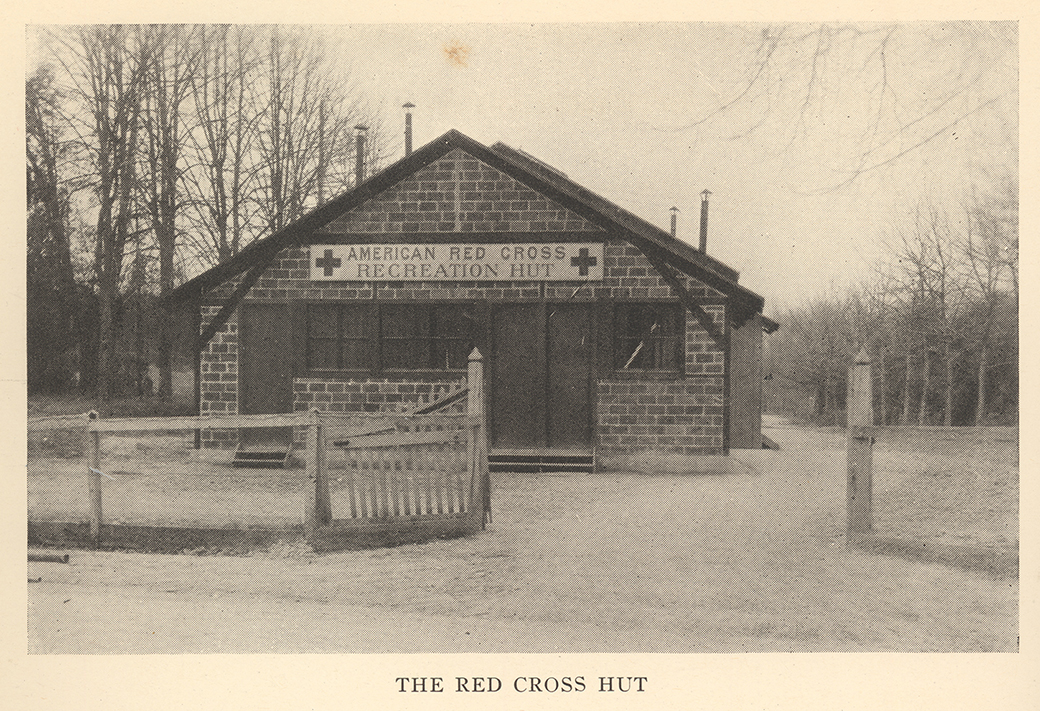
YMCA Hut (image from the unit history of Base Hospital 32)
Bishop's Farm (Ferme-des-Evéques)
Located in the countryside between Contrexeville and Suriauville, the farm was originally established by the Bishop of Metz (in 1690) as a private retreat. It later became state property, and, at the time of WW I, the villa hosted an eating establishment enjoyed by the soldiers. The proprietor, Pere Brossard, was fondly remembered. Today it is private property.
With all the rush of preparations and organization work, sufficient leisure time was found for occasional long walks into the surrounding country and exploration trips into quaint little neighboring towns. Early in January someone discovered the Ferme des Eveques -- a charming little villa, nestling among the wood-covered hills a short distance out from town. Here a nine-hole golf course had once attracted throngs of visitors from Contrexeville. The golf course now had been abandoned to the sheep, but the villa itself, with its excellent cuisine and well-stocked cellars, had lost none of its charm, and became a popular objective for afternoon walks and Sunday supper parties. Vittel, similar to Contrexeville in many respects, and larger, also attracted many visitors. Outrancourt, Suriauville, Ligneville, Bulgneville and Dombrot-all quaint little villages, typically French-afforded a variety of interesting walks. [Hitz, pp. 54-55]
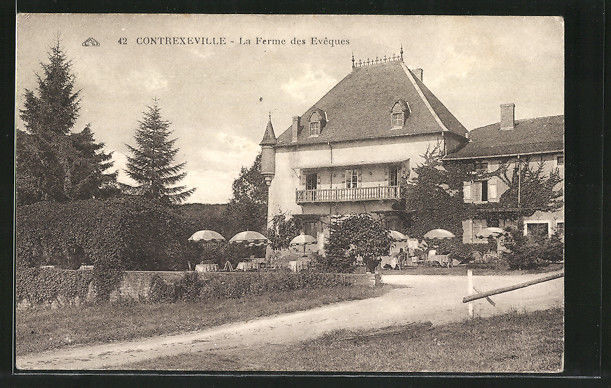
Bishop's Farm (image captured from eBay)
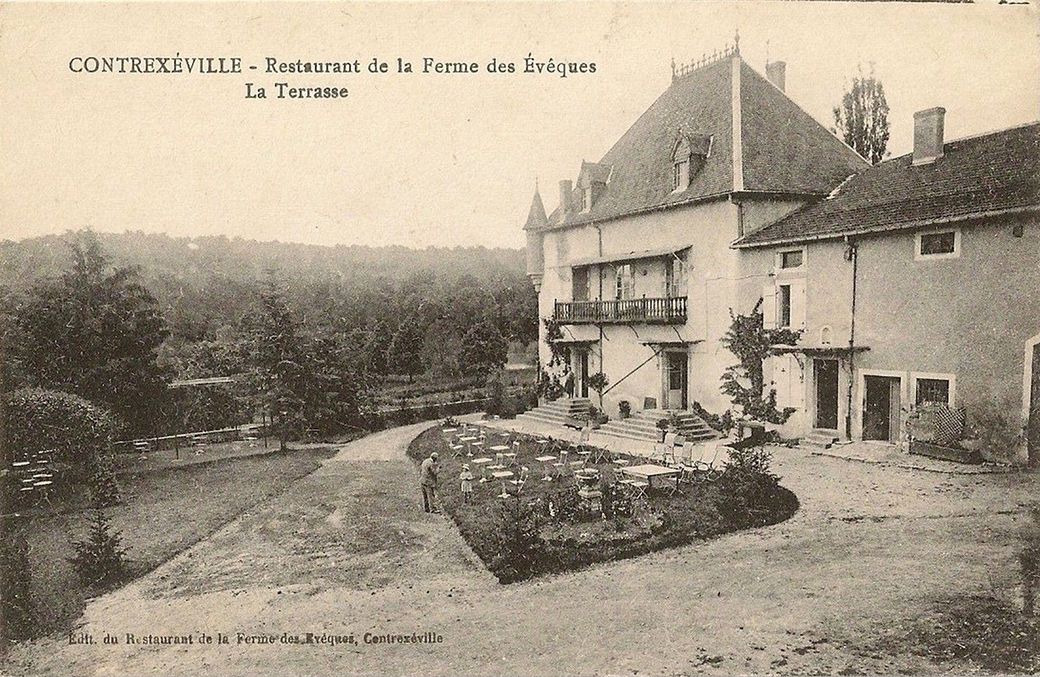
Bishop's Farm (image captured from eBay)
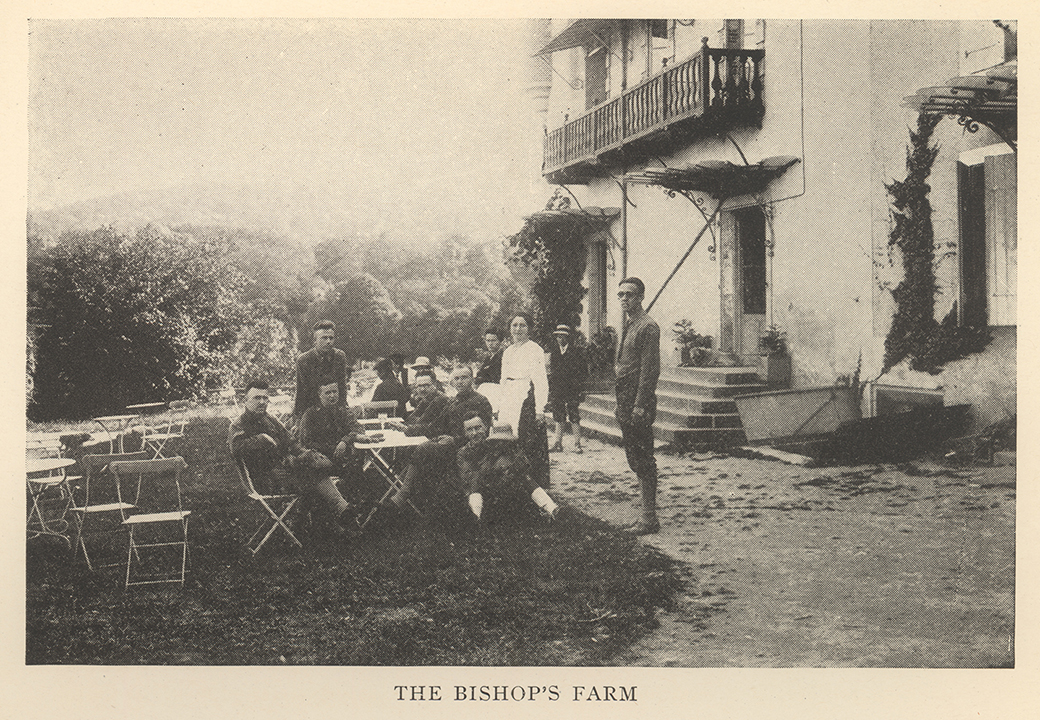
Bishop's Farm (image from the unit history of Base Hospital 32)
Villa Jeanne
Through the activities of the American Red Cross, Villa Jeanne, on Rue Salabery, was leased and furnished for use as a Nurses' Club, with Miss Beryl M. Johnson as directress. Villa Jeanne with ten rooms on three floors, all prettily furnished, made a "homey" gathering place. The two large rooms on the first floor were furnished as a music room and parlor, with pretty wicker ware furniture and appropriate floor coverings. A kitchen for the preparation of afternoon tea and dainty luncheons, such as Miss Johnson planned, was well equipped. On the second floor were three rooms, furnished as reading and lounge rooms for the exclusive use of the nurses. The most attractive room in the house, however, was on the top floor. It boasted of a sewing machine, ironing board and electric flat irons.
[Kaletzki, p. 64]
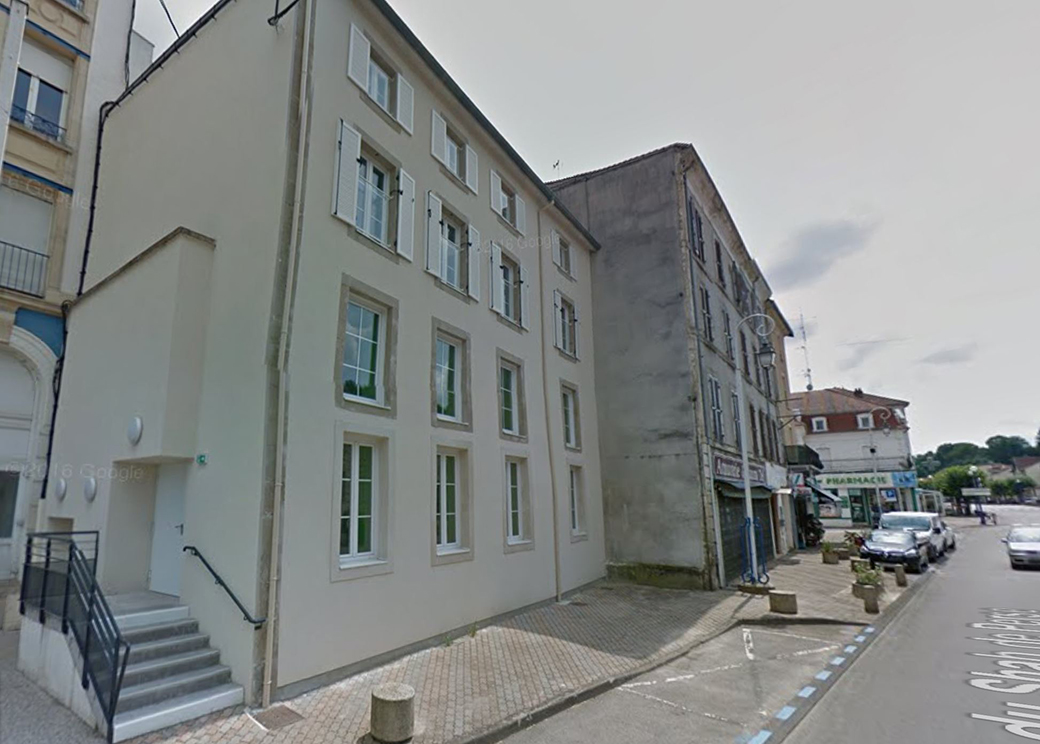
Site of former Hotel Jeanne (image captured from Google Maps street view)
Lallemont's
According to Gilbert Salvini, local historican in Contrexeville, "Villa Lallement de Contrexéville [was] originally built in 1890 by Paul Lallement, [who was] employed at the source of Dr. Thiéry. It was intended to accommodate the family of Paul Lallement on the ground floor, [and] the flats of the floors were rented to the spa guests during the thermal season. In 1914/1917 the French Army established offices there as well as the American army." (translated from the original French with Google Translator.) In 2018, this location was in use as an office for a car transport company.
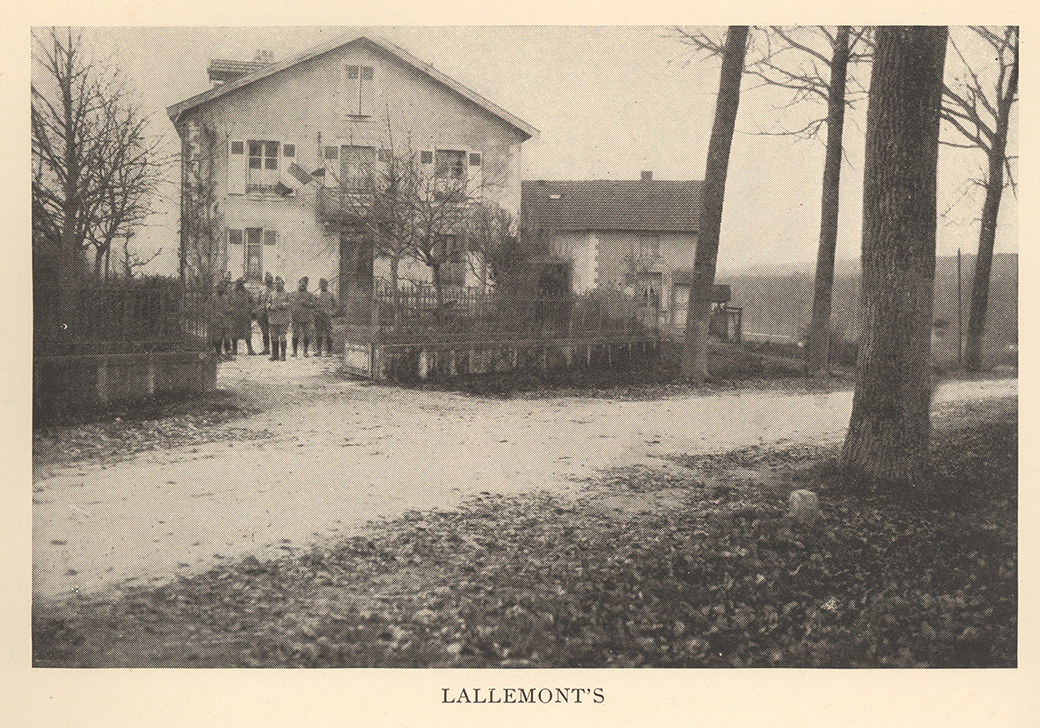
Lallemont's (image from the unit history of Base Hospital 32)
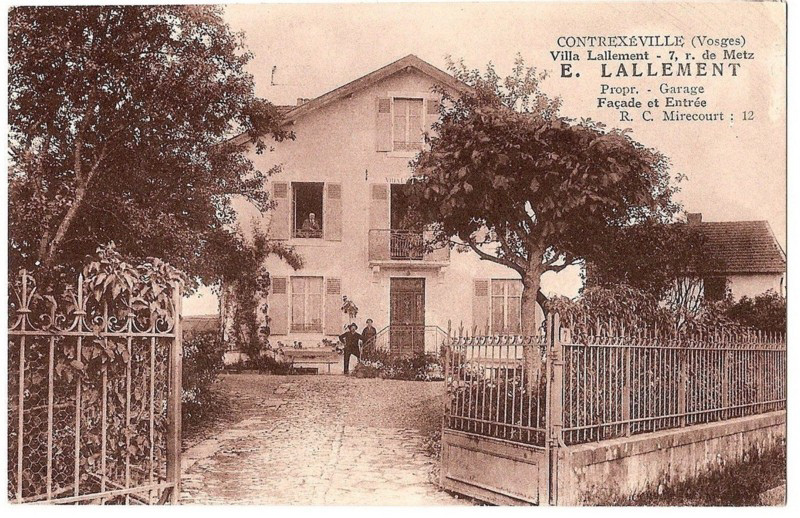
Lallemont's in 1935 - Eugene Lallemont, a cousin of the original owner Paul Lallemont, operated his business as a car mechanic from this location (postcard image courtesy of Gilbert Salvini)
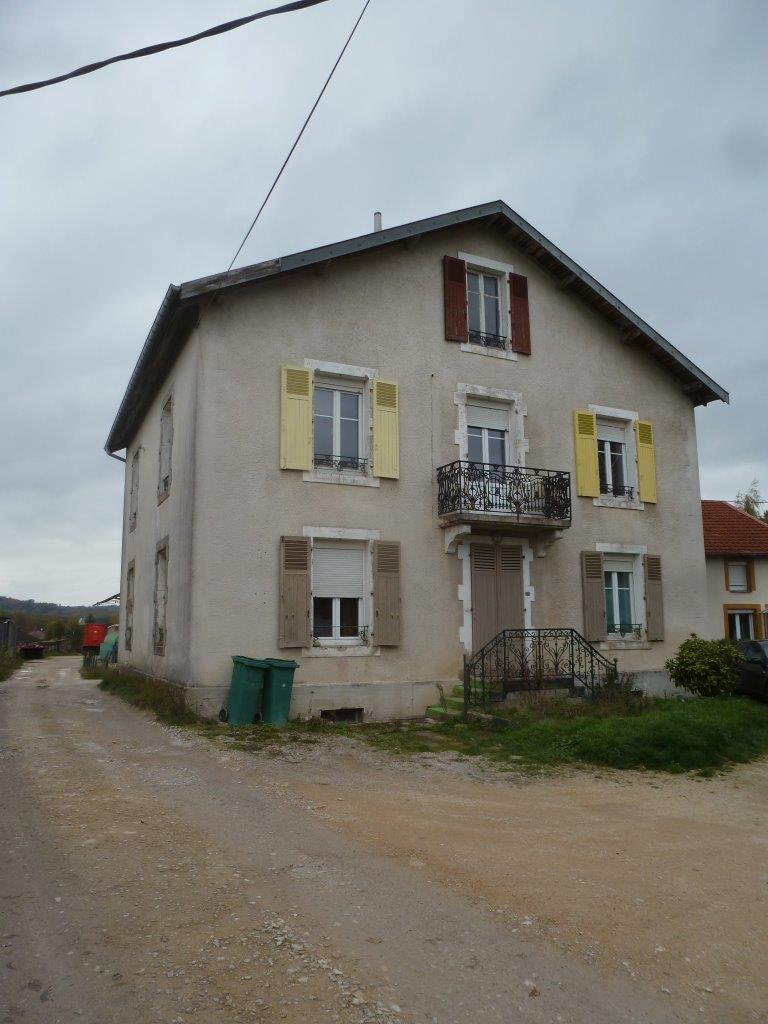
Lallemont's as it appears in 2018 (image from Google Street View)